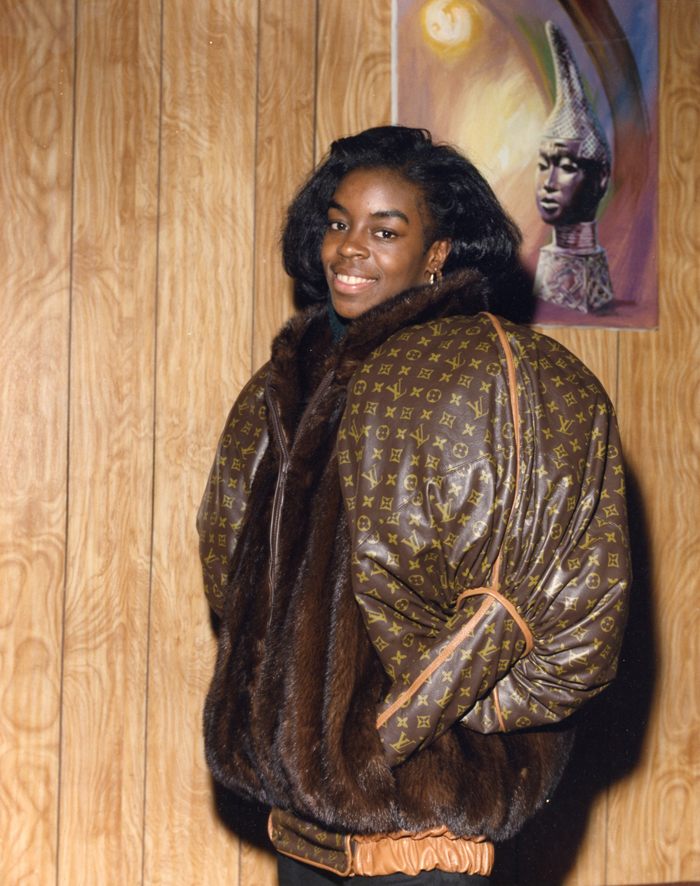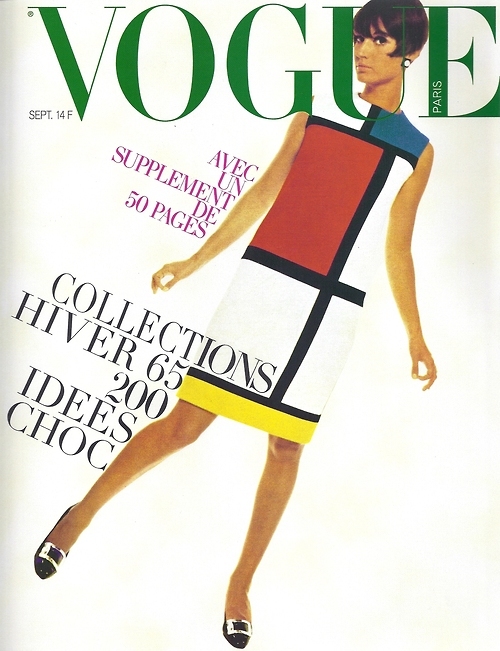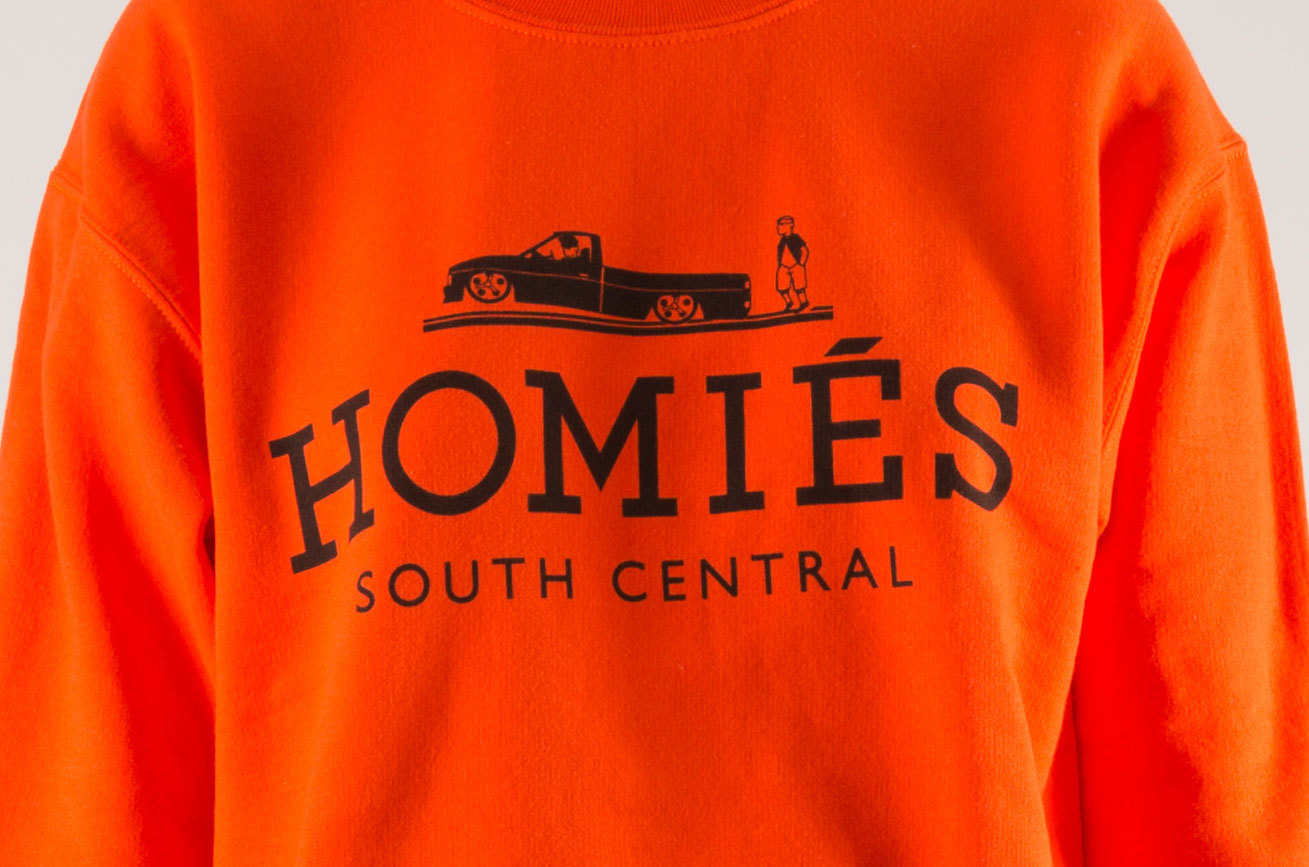Counterfeit is cool. Nope, this isn’t a sponsored announcement from Alibaba.com, but a personal observation, gleaned from Shanzhai Biennial’s photos of faux Chanel duffels at Colette, M.I.A.’s Versace collection inspired by knock off Versace, and the great Hermes/Homies pandemic of 2013. If you live in NYC or London, you’ve certainly noticed downtown kids sporting misshapen double-Cs and pleather “Gucci” belts. Bonus points? Mixing the blatantly fake with the blatantly real and expensive (Moschino motorcycle backpack, plastic Miu Miu boots, plate of $25 truffle fries, whatever).
Like a Forever 21 design, it’s difficult to determine where the concept of “cool counterfeit” originated. A new exhibit at the New York’s Fashion Institute of Technology’s museum gives us a glimpse. Faking It: Originals, Copies, and Counterfeits, opening on Tuesday, traces the origin of fashion copying back to European couture houses like Worth, Poiret, and Balmain, through the logomania of the 80s, and up to today’s streetwear wordplay. What’s fascinating about Faking It, though,is that the current Zeitgeist is only one part. In addition to Moschino McDonalds, the exhibit shows a 66 dress by Campbell’s. To get one, you would mail in $1 and two soup can labels and the company would send back the shift, a copy of Warhol’s own copies of Campbell’s.
The dichotomy between original and copy was almost always murky, Faking It points out. In the mid 20th century, couture houses like Dior would license their designs to overseas department stories, effectively sanctioning (and getting a cut from) copyists. From there sprung diffusion lines and, eventually, fast fashion collabs, parodies, and meta-commentaries. As much as counterfeiting seem edgy, though, the practice itself is almost universally maligned among designers. It costs billions each year, which is, of course, why they’re willing to back anti-counterfeiting partnerships and donate garments to exhibits like this one. The paradox is, as much as copying is a parasite to high-fashion brands, it’s also a marker of success. “We don’t want to be a brand that nobody wants to copy,” Prada’s CEO said in 2012.
We sat down with FIT curator Ariele Elia ahead of the exhibition’s opening tonight to discuss the origin of counterfeits, the time Balenciaga banned press from its fashion shows, and why Coco Chanel welcomed the fakers.
What’s the oldest counterfeit in this exhibit? Why did you begin there?
The oldest piece we have in our show is a pair of shoes from the 18th century with paste stone buckles that imitate diamonds. But, copying mostly started with the advent of the couture system and designer labels. [Early and mid 20th century] couturiers created “licensed copies,” which were line-for-line copies with the same materials and technique, except without labels. Buyers from department stores in America like Bergdorf’s and Macy’s would go to Paris and purchase licenses from couturiers like Poiret, Balmain, and Dior.
It’s fascinating that copying was so integral to the couture business model. When did it start threatening it?
It actually goes all the way back. In 56, Balenciaga and Givenchy both banned press from their collections because they thought it would be a good way to eliminate copies and knockoffs. Only private clients and commercial buyers, whom they hoped were loyal clients, were allowed. It didn’t completely work. Buyers might buy one garment, but they’d see the whole collection. Photography and sketches weren’t allowed in shows, so they had special copyists and sketchers who would remember. Someone would do the sleeves, someone else the bodice, someone else the trim. And at the end of the show they’d get together at a hotel and piece the outfits together.

In the early 20th century, Paquin, Poiret, and Vionnet were huge proponents of the first copyright laws in France. In France you can copyright garments, whereas in the US you can only trademark labels and logos or copyright patterns. One of the reasons labels, and later, logos, became popular, is because it’s easier to go after people who copy them. But, it also made pieces direct targets, because you can reproduce logos so [easily]. France still has one with the highest levels of intellectual copyright protection. If you carry a counterfeit bag, you run the risk of being arrested or fined.
When you were doing your research, was it difficult to figure out what was real and what was fake?
With some of the accessories it’s very difficult to tell whether they’re authentic. Often, it’s only on the inside where it shows. There will be shoddy construction or the leather will be buckling, even if the outside is perfect.
Did you find any examples of counterfeits that were more ingenious or creative than their originals?
The Dapper Dan pieces are really interesting. Dapper Dan created counterfeit leather pieces popular with hip hop artists in the 80s and 90s, and wanted to make his clients feel wealthier than they were. He printed luxury logos like MCM, Louis Vuitton, and Gucci. And he actually found a way to print on leather so it wouldn’t bleed when it was raining. One bomber jacket was double-breasted to look like a tuxedo – it’s more interesting than something MCM or Louis Vuitton would have done.
Another example is one of my favorite pieces, this Yohji Yamamoto dress [from 2007]. He’s copying the Louis Vuitton logo. Was he making fun of the brand? Was it his own co-opting of it? What’s interesting is he didn’t get in trouble.

Tell me about the portion of the exhibit about designers copying artists.
It’s a weird loophole. There haven’t been any lawsuits from artists against fashion designers. Art lawyers I spoke to said it’s typically seen as a homage – YSL’s Mondrian garments, for example. There was one case, Marc Jacobs for Perry Ellis, where he got a cease and desist letter from the Academy of Motion Pictures for [a skirt printed with the Oscar statuette]. The skirt was never produced, but they donated it to the museum.
Are there any designers that appreciate counterfeiting or see it as advertising? Is it always a bad thing?
Chanel, for one, was into people knocking off her things. I think she understood the fashion system and that there isn’t any bad press. In 1930, she did team up with Vionnet to go after counterfeiters. But by the time you get to the ’60s, she realized that when people copied her, everyone knew it was Chanel anyway.
Faking It is on view from December 2, 2014 – April 25, 2015 at the Museum at the Fashion Institute of Technology in New York.
Credits
Text Alice Hines
Images © The Museum at FIT
